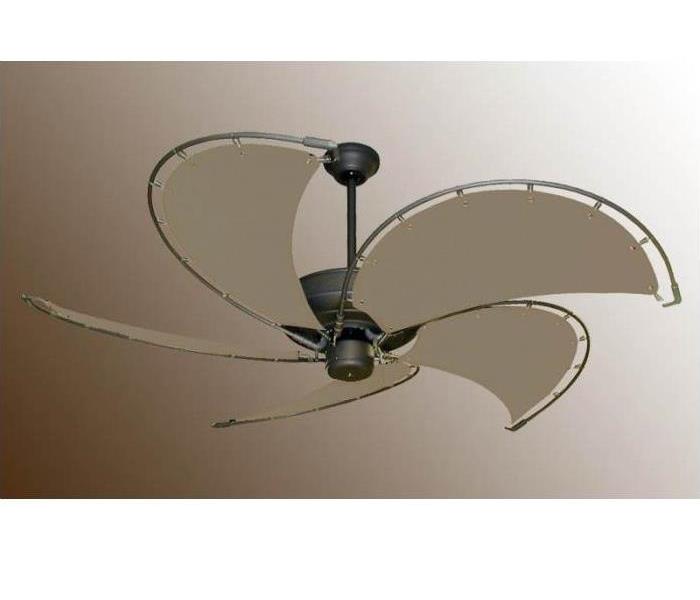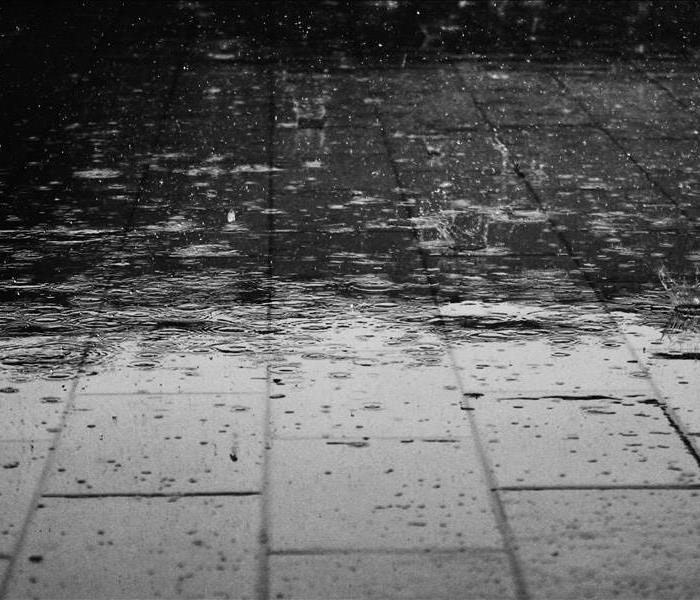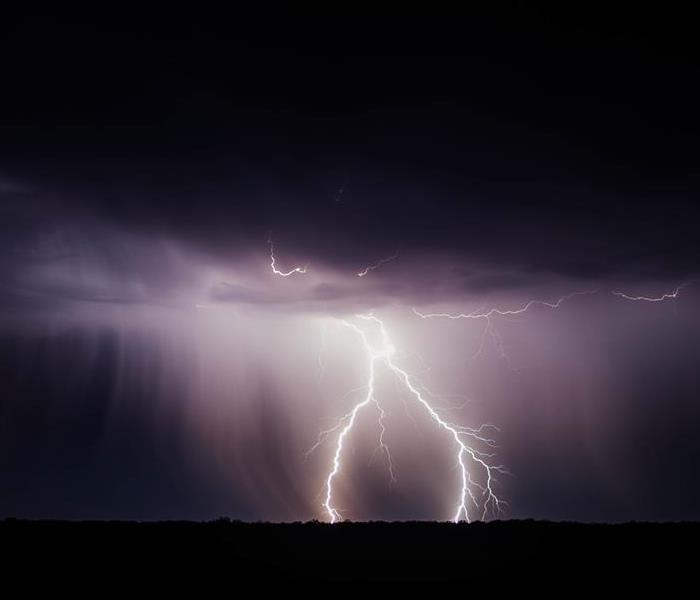Recent General Posts
Fireworks Safety Tips For Your 4th of July Celebration
6/25/2019 (Permalink)
With the 4th of July around the corner, we have already started hearing fireworks being set off in our Southbury area neighborhoods. Let's face it, it's hard to resist picking up a few things that go bang and some sparklers for the kids. At the risk of sounding like a killjoy, we do want to remind our customers that fireworks, and even sparklers, cause quite a bit of damage and bodily injury each year.
In fact, according to the National Fire Protection Association, fireworks start an average of 18,500 fires per year. This includes 1,300 structure fires, 300 vehicle fires and 16,900 outdoor fires. The NFPA recommends that you leave fireworks to the professionals however if you want to set a few off in your driveway, here are a few tips to keep it safer.
- Alcohol and fireworks do not mix. Save your alcohol for after the show.
- Wear safety glasses when shooting fireworks.
- Light one firework at a time and then quickly move away.
- Use fireworks OUTDOORS in a clear area; away from buildings and vehicles.
- Never relight a “dud” firework. Wait 20 minutes and then soak it in a bucket of water.
- Always have a bucket of water and charged water hose nearby.
- Never carry fireworks in your POCKET or shoot them into METAL or GLASS containers.
- Do not experiment with homemade fireworks.
- Dispose of spent fireworks by wetting them down and place in a metal trash can away from any building or combustible materials until the next day.
Adults should always handle fireworks. Although sparklers are fun, they account for roughly one quarter of fireworks injuries. If you give kids sparklers, make sure they keep them outside and away from the face, clothing, and hair. Sparklers can reach 1,800°F (982°C) — hot enough to melt gold. Kids are also drawn to investigate the used pieces of fireworks that lie on the ground after an event. Discourage this, as some may hot and even still be ignited and can cause burns.
Pet safety is also a concern on the 4th of July. Think about your pet. Animals have sensitive ears and can be very frightened or stressed by the noise that fills the day. Don't bring your dog to the barbecue – they are happier and safer if left inside. Create a comfortable place inside your home for your pet. Finally, make sure your pet has accurate identification tags on them in case they run away because of the loud noises.
Whether you choose to stay at home or go to a public fireworks show, stay safe and have a great time!
Is Your Southbury Household Prepared For a Disaster?
9/7/2018 (Permalink)
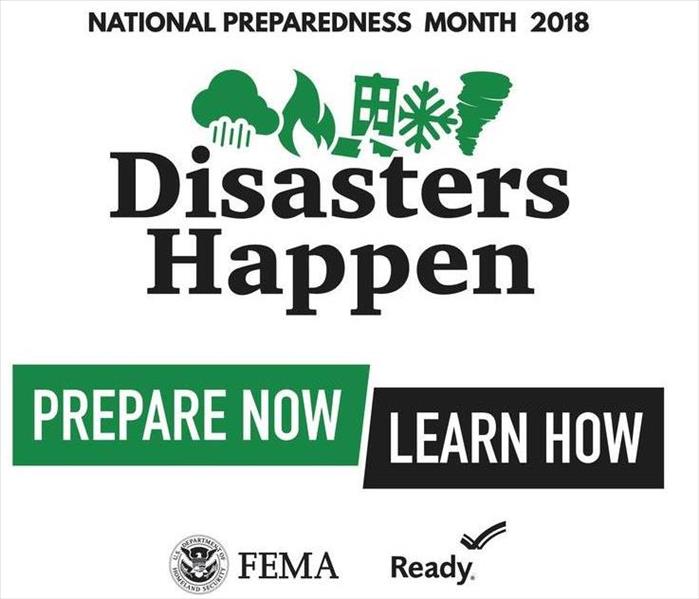 September is National Preparedness Month.
September is National Preparedness Month.
September is National Preparedness Month, a time to go over your family's emergency plan.
When establishing an emergency plan, be sure to consider the specific needs of the members of your household. Discuss your needs and responsibilities and how people in the network can assist each other with communication, care of children, business, pets, or specific needs like the operation of durable medical equipment. Create your own personal network for specific areas where you need assistance. Keep in mind some these factors when developing your plan:
- Different ages of members within your household
- Responsibilities for assisting others
- Locations frequented
- Dietary needs
- Medical needs including prescriptions and equipment
- Disabilities or access and functional needs including devices and equipment
- Languages spoken
- Cultural and religious considerations
- Pets or service animals
- Households with school-aged children
Also consider your elderly friends or neighbors in your plan. They often need help and do not always have local family.
SERVPRO of Southbury/Torrington is dedicated to helping our community when disaster happens. If you have a flood or fire emergency, call us at (203) 267-6262.
Clean your Gutters!
11/2/2017 (Permalink)
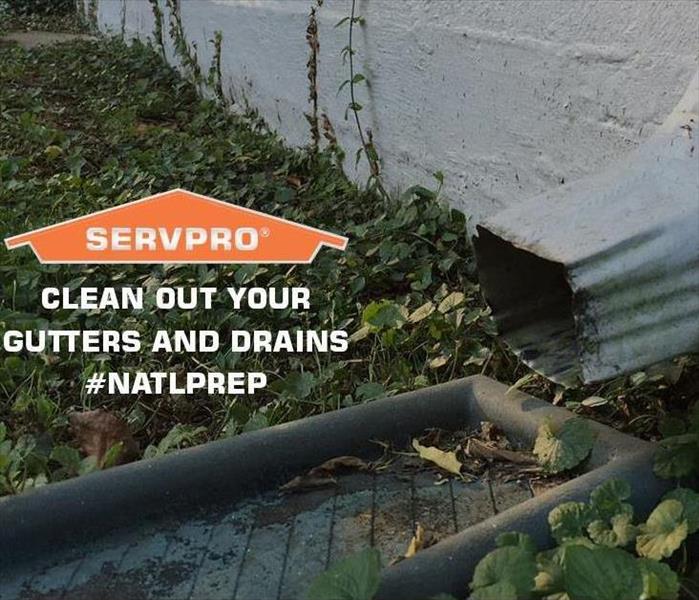 Gutter Clean-up
Gutter Clean-up
To help minimize potential exterior/interior, water issues be sure to clean your gutters and drains to ensure that water is properly draining from your home or building.
Our office is commonly flooded with phone calls during the fall due to backed up gutters and drains that enter a home or business and cause water damage. The backing up of gutters is very common due to the simple fact that leaves, acorns, and other debris build up in the gutters and rain water has no where to go but into your home.
This same type of debris indicated above can cover up drains along foundations and patios which will lead to water damage to basements and lower levels of your home. Not only can water damage occur to your interior living space, but the even more costly damage can take place such as foundation damage, peeling paint, rot to sill plates, and other costly items.
Simply put an ounce of prevention will lead to pounds of protection by just maintaining the water drainage system designed to protect your house or building.
If water damage does occur to your home it is imperative to address it immediately. We are available to help 24/7 call or visit us at http://www.SERVPROsouthburytorrington.com/
Heading to Texas with Relief & Supplies...
8/30/2017 (Permalink)
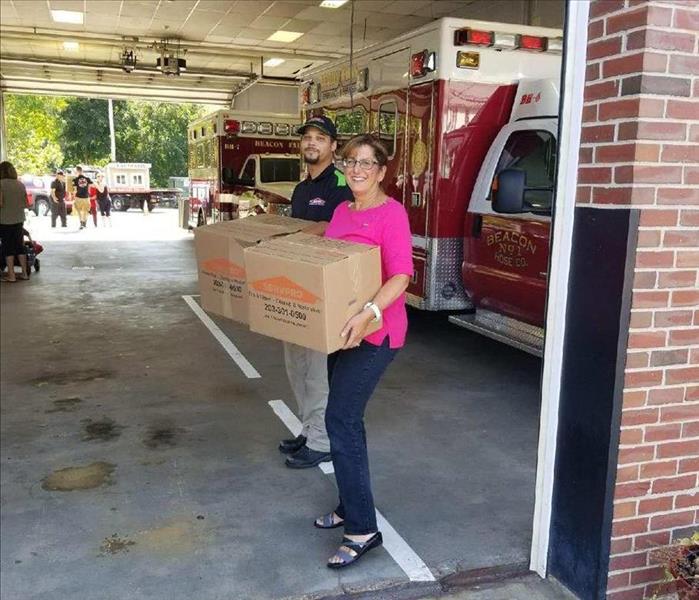 SERVPRO of Southbury / Torrington team members delivering relief items to Beacon Hose Company #1.
SERVPRO of Southbury / Torrington team members delivering relief items to Beacon Hose Company #1.
SERVPRO of Milford-Orange-Stratford and SERVPRO of Southbury / Torrington would like to extend a big thank you to Beacon Hose Company #1 for taking the initiative and collecting relief supplies for victims of Hurricane Harvey. Beacon Hose Co. 1 will be heading to the Houston suburb of Galina Park, Texas around midnight tonight in their personal vehicles and trailer with donations collected from generous donors to help the victims.
Our team at SERVPRO of Milford-Orange-Stratford, and SERVPRO of Southbury/Torrington, are proud to have participated by donating items to help the victims of Hurricane Harvey.
Let's keep the volunteers of Beacon Hose Company #1 in our thoughts and prayers as they travel to Galina Park, Texas to help bring relief to those in need from this devastating storm.
Signs That Your Hot Water Tank Could be Failing You!
7/9/2017 (Permalink)
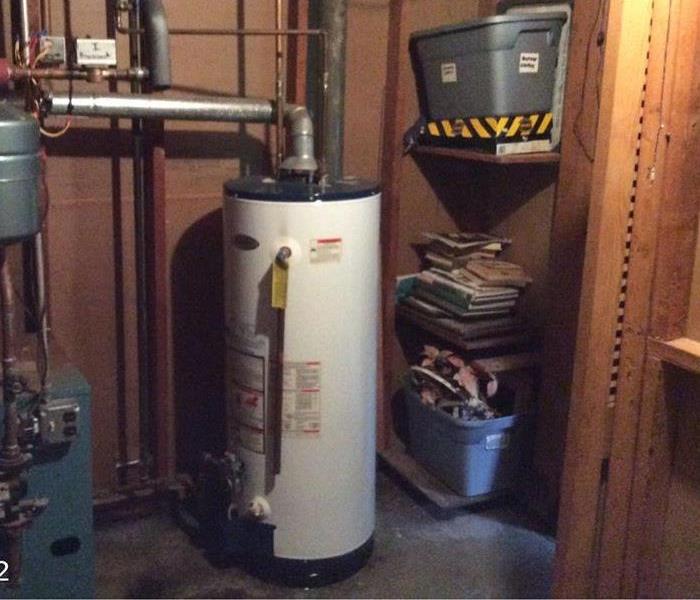 Hot water storage tank
Hot water storage tank
Signs That Your Hot Water Tank Could Be Failing You!
The average hot water heater lasts approximately 10 years before it needs to be replaced. Internal parts of the heater can corrode or over time, develop mineral buildup. Mineral buildup can compromise the efficiency of the heater. Regular flushing and professional annual maintenance can help prolong the life span of the unit. To avoid any disruption or damage of a failing water heater. Below are indicators that your water heater may be in need of repair and/or replacement.
Common signs to look for:
- Insufficient water
- Noisy water heater
- Cloudy or hot water that may have an odor
- Metallic water taste
- Rust or leaks around connections
- Leaking tank
If you are experiencing any of the above signs, have it serviced immediately!
The Importance of Carpet Cleaning....
6/27/2017 (Permalink)
 Milford Bank Area Rug.
Milford Bank Area Rug.
The Importance of Carpet Cleaning…
Carpets act as a filter for trapping particles like dirt, dust, dander and other contaminates. Regular carpet cleaning can help reduce or eliminate pollutants. While vacuuming is a key component for proper care and maintenance, it does not remove all trapped particulates. To maximize your cleaning efforts and to reduce dirt, allergens, dust mites and other microscopic pollutants, it is recommended by the Institute of Inspection on Cleaning & Restoration (IICRC) to professionally steam clean and sanitize your carpet on an annual basis.
Also, as for Oriental rug, upholstery, and other specialty soft good cleanings, we are happy to offer our customers a service whereby we are available to either pick-up, or clean on site. To learn more about carpet cleaning we invite you to visit us at http://www.SERVPROsouthburytorrington.com/or call us at 203-267-6262.
Did You Know That There Are 3 Categories and Classes Which Describe Water Contamination?
5/22/2017 (Permalink)
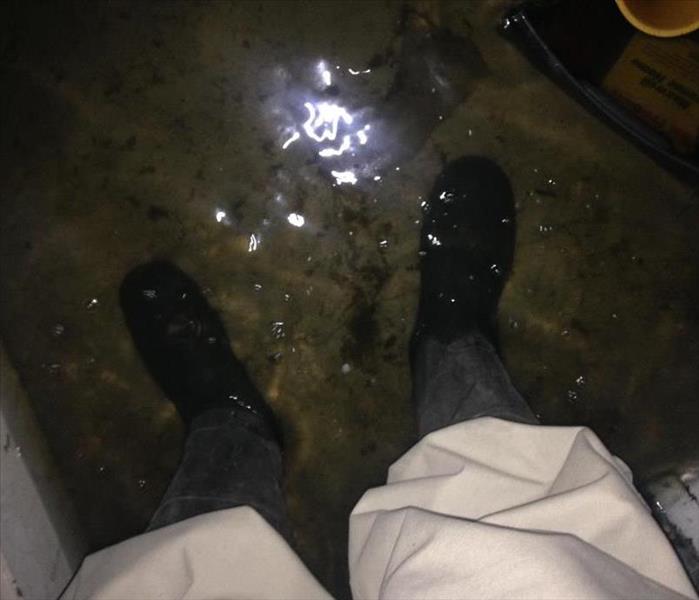 Category 3 - Ground Water
Category 3 - Ground Water
With all the recent rain fall, did you know that there are different categories and classes which describe contaminated water? According to the IICRC (Institute of Inspection Cleaning and Restoration Certification), which sets the standards for the cleaning industry and water damage restoration training, there are several different levels and classes around water destruction. From the IICRC’s S-500 standards, they are as follows:
Category 1. This is water from a clean and sanitary source, such as broken water supply lines, tub or sink overflows or appliance malfunctions that involves water supply lines. The cleanliness of Category 1 water can deteriorate quickly due to contact with building and other materials.
Category 2. This category, once referred to as grey water, contains level of contaminates that may cause illness or discomfort if ingested. Sources include toilet bowls with urine (no feces), sump pump failures, and water discharge from dishwashers or washing machines.
Category 3. This is the worst classification, once referred to as black water, is grossly contaminated and can contain pathogenic, toxigenic, or other harmful agents. If ingested it can cause severe illness or death. Sources include sewer backup, flooding from rivers or streams, toilet overflow with feces, and ground surface water or standing water that has begun to support bacterial growth.
Next are the classes of water damage which determine the probable rate of evaporation based on the type of materials affected, or wet, in the room or space that was flooded.
Class 1. Slow rate of evaporation and easiest to deal with. Only part of a room or area was affected, there is little or no wet materials, and the moisture has only affected materials with a low permeance rate, such as plywood or concrete.
Class 2. With a fast evaporation rate, this level affects an entire room, carpeting, or cushioning, the wetness has wicked up the walls at least 12”, and there is moisture remaining in structural materials.
Class 3. This class has the fastest evaporation rate. Ceilings, walls, insulation, carpet and sub-floors are all saturated.
Class 4. This class is labeled as specialty drying situations, which means there has been enough water and time to saturate materials with very low permeance, such as hardwood, concrete, stone, crawlspaces and plaster.
Should the unexpected happen and you are faced with a water loss, please call us at 203-267-6262. We make it “Like it never even happened.®”
The Health Effects of Mold:
4/12/2017 (Permalink)
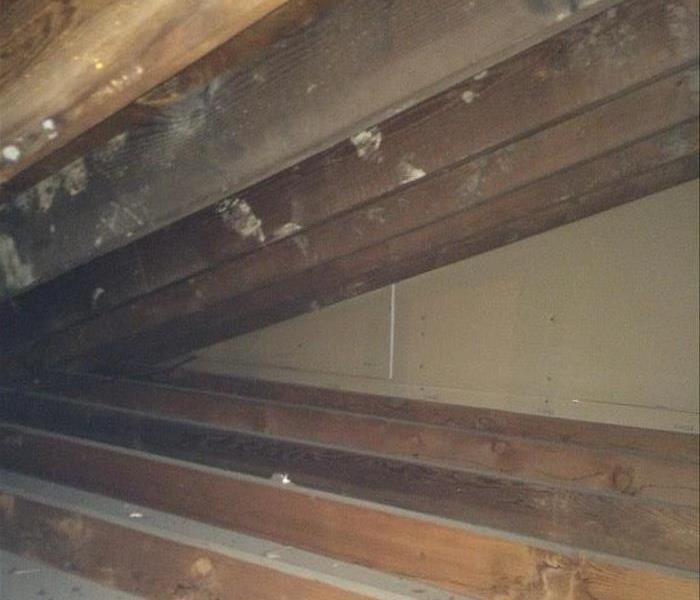 Mold found in attic.
Mold found in attic.
The Health Effects of Mold:
Mold can produce allergens and irritants which can potentially cause health effects such as:
- Allergy Symptoms
- Asthma
- Difficulty Breathing
- Weakened Immune System & Chronic Sickness
Mold can spread quickly throughout your home in as little as 48 hours. If you suspect that your home or business has a mold, we can help by inspecting your property. If mold is found, we are are the experts to remediate your mold infestation.
To learn more about mold visit us at www.SERVPROsouthburytorrington.com or call 203-267-6262.
A Winter Tip For Your Ceiling Fans
2/13/2017 (Permalink)
A Winter Tip For Your Ceiling Fans
During cold winter months, consider reversing your ceiling blade fans. In normal mode, ceiling fans spin in a counter-clockwise direction. Their blades are positioned to push air down, resulting in a cool breeze. But did you know by switching your ceiling fan to reverse (low speed), the fan now spins in the opposite direction which pulls air up towards the ceiling, driving the warm air that has risen naturally back down and redistributing warm air back to the edges of the room.
As for the warmer months, you will want the fan to move air straight down, so your ceiling fan will now need to run in a counter clockwise direction. As the temperature rises, increase the speed setting to cool the room.
Did You Know That There Are Different Types Of Smoke?
12/28/2016 (Permalink)
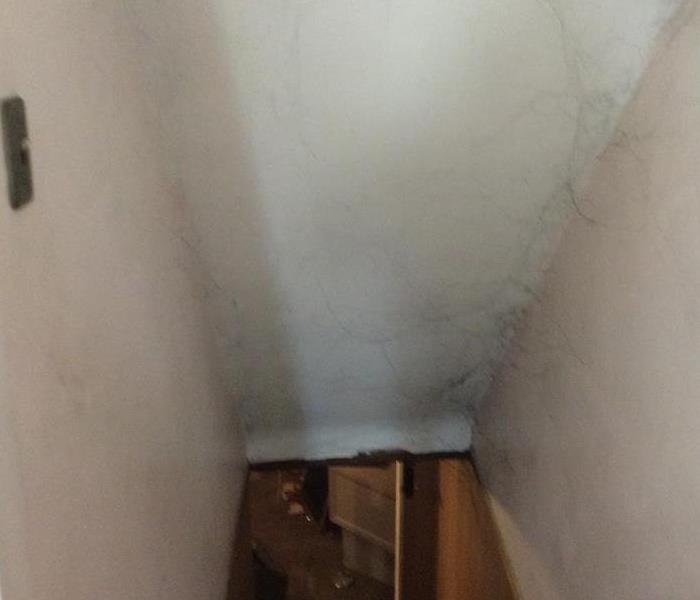 An example of soot webs (aka cobwebs).
An example of soot webs (aka cobwebs).
Some of the different types of smoke are:
Fuel Oil Soot – Furnace puff backs
Wet Smoke – Plastics and rubbers low heat, smoldering, pungent odor, sticky, smeary.
Dry Smoke – Paper and wood fast burning, high temperatures, heat rises therefore the smoke rises.
Protein – Produced by evaporation of material rather than from a fire. Virtually invisible, discolors paints and varnishes, extreme pungent odor.
Other Types – Tear gas, fingerprint powder and fire extinguisher residue.
As we enter into the colder months and turn up our thermostats, one of the common types of smoke is fuel oil soot released from your furnace, called a “puff back.”
A puff back is a different type of smoke, a sudden dispersion of black smoke and soot throughout the house. Another identifier can be the appearance of cobwebs, but are actually “soot webs” which are much darker and has an oil odor present. The oil base soot disperses throughout one’s home affecting walls, ceilings, carpets and furniture to name a few. It is extremely difficult to remove and there may be a foul odor in the affected rooms.
The cause for a puff back may vary from age of boiler, lack of maintenance, failure to make needed repairs and/or a malfunction. All heating systems, especially oil-fired, should be inspected, cleaned and adjusted at least once a year by a qualified professional.
Should the unexpected happen, clean-up should be handled by a professional cleaning company like SERVPRO of Southbury/Torrington, to make it "Like it never even happened."
Flooding Safety Tips
8/24/2016 (Permalink)
Floods are one of the most common and widespread natural disasters in the United States. Regardless of where your home may be located, there is always potential for flood damage.
Floodsmart.gov reports, in the last 5 years, all 50 states have experienced floods or flash floods. Just because you haven’t experienced a flood in the past, does not mean you won’t in the future. In fact, nearly 20% of all flood insurance claims come from moderate-to-low risk areas.
On average, floods cost $3.5 billion in annual losses in the United State.
According to the American Red Cross, floods cause more damage in the U.S. every year than any other weather-related disaster. American Red Cross offers the following flood safety tips:
Be Prepared:
- Water – at least a 3 day supply, one gallon per person per day
- Food – at least a 3 day supply of non-perishable food
- Radio – either battery powered or hand crank
- Extra batteries
- Multi-purpose tools
- First Aid Kit
- Copies of personal document (Insurance policies, birth certificates and etc.)
- Know what your homeowner’s insurance covers and/or doesn’t cover.
- Because standard homeowner’s insurance doesn’t cover flooding, it’s important to have protection from the floods associated with hurricanes, tropical storms, heavy rains and other conditions that impact the U.S. For more flood safety tips and information on flood insurance, please visit the National Flood Insurance Program Web site at FloodSmart.gov.
- Camera – to photograph damages
Responding Appropriately During a Flood:
- Be prepared to evacuate at a moment’s notice
- Stay away from floodwaters which may contaminated
- Keep children away from water.
Flood Recovery Tips:
- Return home only when officials declared the area as being safe.
- Approach home carefully, look for loose power lines, cracked foundation, and other damages.
- Watch out for wild animals, especially poisonous snakes that may come into your home through flood water.
- If you smell natural or propane gas or hear hissing, get out and call fire department
- During cleanup, wear protective clothing, including rubber gloves and boots.
If a flood does strike your home or business, contact SERVPRO of Southbury/Torrington. Even minor floods have the potential to cause major damage to a structure when not treated properly. Cleanup can often be an overwhelming task. SERVPRO of Southbury/Torrington is prepared to handle any size disaster, to make it like it never even happened!
Be Severe Weather Ready
8/8/2016 (Permalink)
Be Severe Weather Ready
Severe weather can happen anywhere and at anytime. Each year, Americans can experience an average of the following intense storms:
· 10,000 severe thunderstorms
· 5,000 floods or flash floods
· 1,000 tornadoes
· 2 land falling deadly hurricanes
Approximately 98% of all presidentially declared disasters are weather-related, leading to around 500 deaths per year and nearly $15 billion in damage. Knowing your risk of severe weather, taking action and being an example are just a few steps you can take to be better prepared to save your life and assist in saving the lives of others.
Know Your Risk. The first step to being weather-ready is to understand the type of hazardous weather is to understand the type of hazardous weather that can affect where you live and work, and how the weather could impact you, your business and your family. Check the weather forecast regularly and obtain a NOAA Weather Radio. Severe weather comes in many forms and your shelter plan should include all types of local hazards.
Take Action. Take the next step in severe weather preparedness by creating a communication plan for your home and business. Put together or purchase an emergency kit. Keep important papers and valuables in a safe place.
Be an Example. Once you have taken action to prepare for severe weather, share your story with co-workers and family and friends on Facebook or Twitter. Your preparedness may inspire others to do the same.
Tips to Help Prevent Your Pipes From Freezing:
1/6/2016 (Permalink)
Winter is in full effect! In an effort to help keep your pipes from freezing, consider the following tips:
Outdoor Care:
Disconnect all garden hoses and if there is water shut off valve, turn it off! Also, consider installing covers on exterior water supplies.
Prevent the water meter from freezing during cold weather by keeping it securely covered.
Indoor Care:
Identify the location of the main and water heater shut-off(s). Knowing the location of these valves can come in handy during an emergency and could help prevent further damages.
Be sure that your home’s thermostat is NOT below 60 degrees.
Leave cabinet doors below sinks open to allow heat from home to circulate.
Close all windows and seal any gaps open to the outside elements, especially those near water pipes. Freezing temperatures combined with wind drafts can cause pipes to freeze.
Insulate pipes that are near exterior walls or in unheated spaces of your home. This can prevent freezing, especially for interior pipes that may run along outside walls.
Seal leaks that allow cold air into your home by weather strip, caulking or insulating. Check air leaks around flue or chimney chase, electrical wiring, dryer vents and pipes. Also, consider insulating outside walls that are in unheated spaces of a home.
If away, shut off water supply valves to your washing machine.
Leave lukewarm water dripping slowly from faucets during extremely cold periods. Water moving through the system should prevent lines from freezing.
If a Pipe Bursts:
Shut off water at the main valve.
If the break is in a hot water pipe, the valve on top of water heater should also be turned off.
Call a plumber immediately! Then call SERVPRO of Southbury/Torrington to make it, “Like it never even happened.”




 24/7 Emergency Service
24/7 Emergency Service




